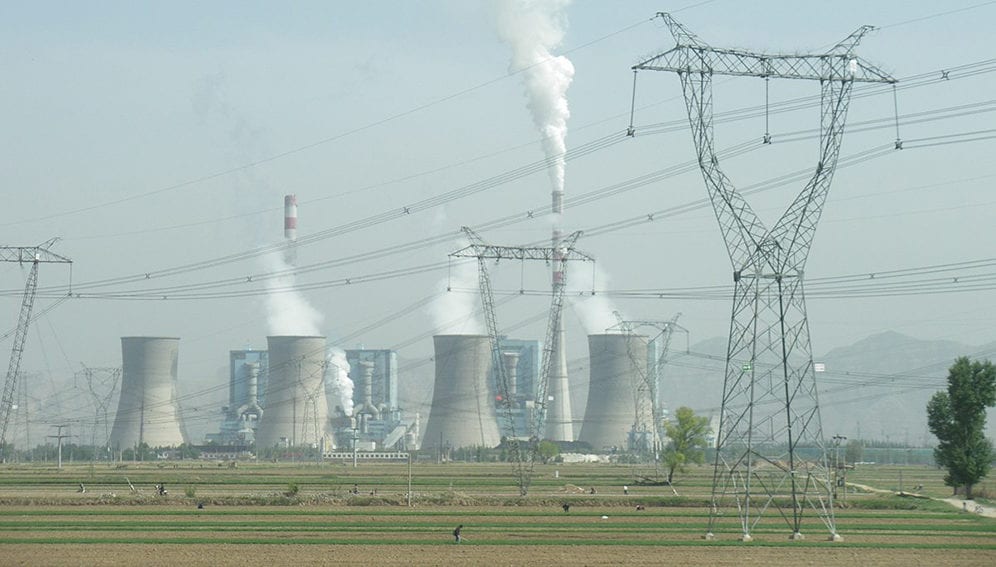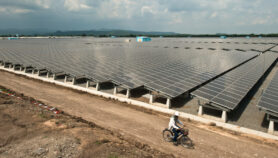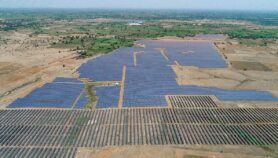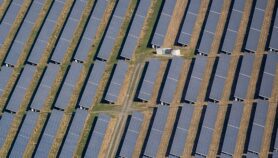07/11/19
China’s green irony: leader in both renewables and coal

By: Melanie Sison
Send to a friend
The details you provide on this page will not be used to send unsolicited email, and will not be sold to a 3rd party. See privacy policy.
[MANILA] China is the undisputable global leader in renewable energy, says a new report. But it also remains a major user and a major exporter of coal to South-East Asian countries, critics point out.
China is the only country willing to subsidise the export of “redundant, domestic coal-fired power manufacturing, engineering and financing capacity”, Tim Buckley, director, Energy Finance Studies for Australia and South Asia, Institute of Energy Economics and Financial Analysis, Ohio, tells SciDev.Net.
“Air pollution has many causes, but fossil fuel combustion – whether it is vehicle engines, power generation or industrial use – is at the core of the problem”
Hongpeng Liu, UN Economic and Social Commission for Asia and the Pacific
Over the last five years, nearly all coal-fired power projects in the region were underwritten by capital subsidies originating with export credit agencies from China, Japan and South Korea, says Buckley. However, the latter two countries are now re-evaluating this strategy, largely because corporations investing in coal-fired power have announced that they will be shifting their investments to renewable energy, he says.
“Asia remains the largest region globally for planned, under construction, or operating coal-fired power plants,” Renewable Energy Policy Network (REN21), a multi stakeholder global think tank that produced the report, says in a statement to SciDev.Net.
According to the report released by REN21, China continues to invest in coal production and investment within the country. In 2018, it saw an increase in coal mining and coal power generation to boost local businesses, encouraged by economic stimulus measures.
Yet, China is also the world’s largest investor in renewable energy installations globally, and has been for the last five years, says Buckley. In fact, China’s renewable power generation capacity grew to nearly 700 gigawatts in 2018, up from 480 gigawatts in 2015 with major investments in solar energy. In terms of renewable generation capacity, China tops with 71 per cent, followed by India at 12 per cent and Japan at nine per cent.
The three countries also top the list of destinations of renewable energy investment in the world. China is also poised to become a market leader in electric vehicle deployment in the next 20 years and mandates support for zero-emission vehicles.
China is also playing a key role in lowering the costs of renewable energy across the entire Asia Pacific region. “Countries like China and India, with their large markets and entrepreneurship, contributed to lowering the cost of renewable energy very significantly, so other countries in the region and beyond can benefit,” says Yongping Zhai, chief of the Asian Development Bank’s energy sector group.
Cooperation among countries in the region is key to achieving Sustainable Development Goal 7, or access to affordable, reliable, sustainable and modern energy, according to Hongpeng Liu, director, energy division, UN Economic and Social Commission for Asia and the Pacific.
REN21, meanwhile, says in their statement that renewable energy is critical in helping countries meet the targets stipulated under the Paris Agreement. “The world is not on track to meet established under the Paris Agreement, or international goals for sustainable development.”
“We are facing a climate crisis,” the statement continues. “Renewable energy is central to achieving these international goals. Using renewables brings other advantages and opportunities, ranging from environmental to socio-economic and political.”
China’s investments in renewable energy were motivated by heavy air pollution in the country. A 2015 study reported that between 700,000 to 2.2 million deaths per year, or 17 per cent of the deaths in the country, are attributable to air pollution. While a recent study reported that policies regulating coal-fired power plants have improved air quality, pollution remains an issue in China, a major greenhouse gas emitter.
“Air pollution has many causes, but fossil fuel combustion – whether it is vehicle engines, power generation or industrial use – is at the core of the problem,” says Liu. “Moving to renewables, along with energy efficiency, has great potential to solve this problem in a cost-effective manner.”
“Ultimately, all countries must move to a low carbon basis of producing electricity. People used to think this was a trade-off with cost and we would not be able to make this work economically. However, now renewable technologies have advanced to a point where, in most markets around the world, the renewable option is cheaper than the fossil fuel option,” Liu adds.
Zhai recommends setting up carbon taxes to encourage countries to support the transition to clean energy. “In the medium and long term, countries in the region should develop carbon trading markets and consider carbon tax to encourage renewable energy development and discourage carbon intensive energy sources.”
This piece was produced by SciDev.Net’s Asia & Pacific desk.













